CMP-Neu5Ac Hydroxylase Null Mice as a Model for Studying Metabolic Disorders Caused by the Evolutionary Loss of Neu5Gc in Humans
- PMID: 26558285
- PMCID: PMC4629002
- DOI: 10.1155/2015/830315
CMP-Neu5Ac Hydroxylase Null Mice as a Model for Studying Metabolic Disorders Caused by the Evolutionary Loss of Neu5Gc in Humans
Abstract
The purpose of this study was to identify the modification/turnover of gene products that are altered in humans due to evolutionary loss of Neu5Gc. CMP-Neu5Ac hydroxylase- (Cmah-) deficient mice show the infiltration of Kupffer cells within liver sinusoids, whereas body and liver weight develop normally. Pathway analysis by use of Illumina MouseRef-8 v2 Expression BeadChip provided evidence that a number of biological pathways, including the glycolysis, gluconeogenesis, TCA cycle, and pentose phosphate pathways, as well as glycogen metabolism-related gene expression, were significantly upregulated in Cmah-null mice. The intracellular glucose supply in Cmah-null mice resulted in mitochondrial dysfunction, oxidative stress, and the advanced glycation end products accumulation that could further induce oxidative stress. Finally, low sirtuin-1 and sirtuin-3 gene expressions due to higher NADH/NAD in Cmah-null mice decreased Foxo-1 and MnSOD gene expression, suggesting that oxidative stress may result in mitochondrial dysfunction in Cmah-null mouse. The present study suggests that mice with CMAH deficiency can be taken as an important model for studying metabolic disorders in humans.
Figures
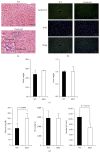
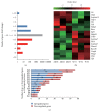
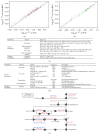

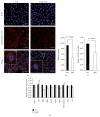
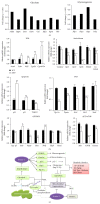
Similar articles
-
N-Glycolylneuraminic Acid (Neu5Gc) Null Large Animals by Targeting the CMP-Neu5Gc Hydroxylase (CMAH).Front Immunol. 2019 Oct 15;10:2396. doi: 10.3389/fimmu.2019.02396. eCollection 2019. Front Immunol. 2019. PMID: 31681287 Free PMC article. Review.
-
Oxidative stress and ROS metabolism via down-regulation of sirtuin 3 expression in Cmah-null mice affect hearing loss.Aging (Albany NY). 2015 Aug;7(8):579-94. doi: 10.18632/aging.100800. Aging (Albany NY). 2015. PMID: 26319214 Free PMC article.
-
Gene expression and pathway analysis of effects of the CMAH deactivation on mouse lung, kidney and heart.PLoS One. 2014 Sep 17;9(9):e107559. doi: 10.1371/journal.pone.0107559. eCollection 2014. PLoS One. 2014. PMID: 25229777 Free PMC article.
-
Phylogenetic Distribution of CMP-Neu5Ac Hydroxylase (CMAH), the Enzyme Synthetizing the Proinflammatory Human Xenoantigen Neu5Gc.Genome Biol Evol. 2018 Jan 1;10(1):207-219. doi: 10.1093/gbe/evx251. Genome Biol Evol. 2018. PMID: 29206915 Free PMC article.
-
Biochemical, Cellular, Physiological, and Pathological Consequences of Human Loss of N-Glycolylneuraminic Acid.Chembiochem. 2017 Jul 4;18(13):1155-1171. doi: 10.1002/cbic.201700077. Epub 2017 Jun 9. Chembiochem. 2017. PMID: 28423240 Review.
Cited by
-
N-Glycolylneuraminic Acid (Neu5Gc) Null Large Animals by Targeting the CMP-Neu5Gc Hydroxylase (CMAH).Front Immunol. 2019 Oct 15;10:2396. doi: 10.3389/fimmu.2019.02396. eCollection 2019. Front Immunol. 2019. PMID: 31681287 Free PMC article. Review.
-
Can we extrapolate from a Cmah -/- Ldlr -/- mouse model a susceptibility for atherosclerosis in humans?Proc Natl Acad Sci U S A. 2020 Jan 28;117(4):1845-1846. doi: 10.1073/pnas.1915658117. Epub 2020 Jan 21. Proc Natl Acad Sci U S A. 2020. PMID: 31964838 Free PMC article. No abstract available.
-
A comparison of the bone and growth phenotype of mdx, mdx:Cmah-/- and mdx:Utrn+/- murine models with the C57BL/10 wild-type mouse.Dis Model Mech. 2020 Jan 10;13(2):dmm040659. doi: 10.1242/dmm.040659. Dis Model Mech. 2020. PMID: 31754018 Free PMC article.
-
N-acetylneuraminate pyruvate lyase controls sialylation of muscle glycoproteins essential for muscle regeneration and function.Sci Adv. 2023 Jun 30;9(26):eade6308. doi: 10.1126/sciadv.ade6308. Epub 2023 Jun 30. Sci Adv. 2023. PMID: 37390204 Free PMC article.
-
Human-like Cmah inactivation in mice increases running endurance and decreases muscle fatigability: implications for human evolution.Proc Biol Sci. 2018 Sep 12;285(1886):20181656. doi: 10.1098/rspb.2018.1656. Proc Biol Sci. 2018. PMID: 30209232 Free PMC article.
References
-
- Brinkman-Van der Linden E. C. M., Sjoberg E. R., Juneja L. R., Crocker P. R., Varki N., Varki A. Loss of N-glycolylneuraminic acid in human evolution. Implications for sialic acid recognition by siglecs. The Journal of Biological Chemistry. 2000;275(12):8633–8640. doi: 10.1074/jbc.275.12.8633. - DOI - PubMed
Publication types
MeSH terms
Substances
LinkOut - more resources
Full Text Sources
Other Literature Sources
Molecular Biology Databases
Research Materials
Miscellaneous

